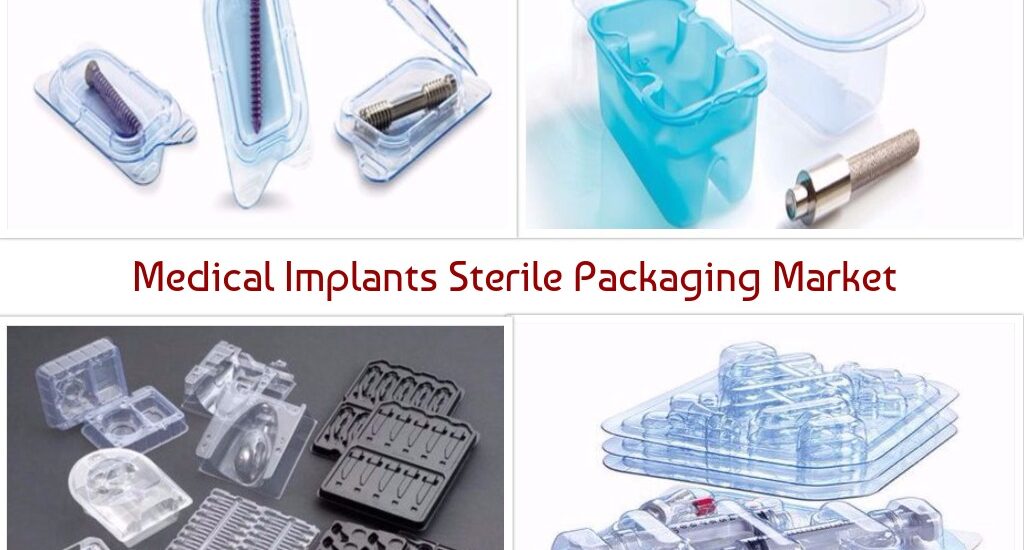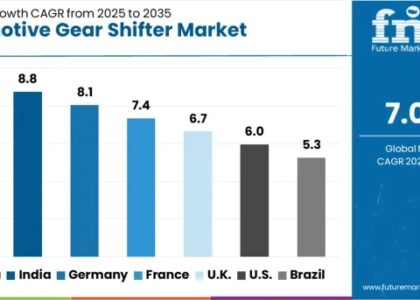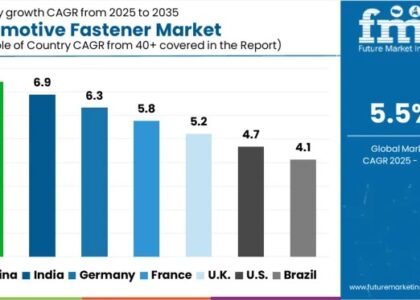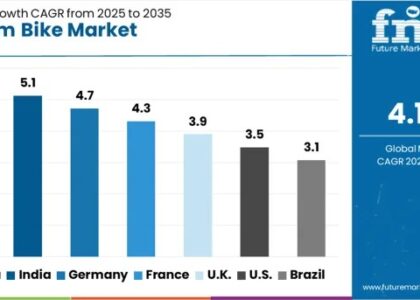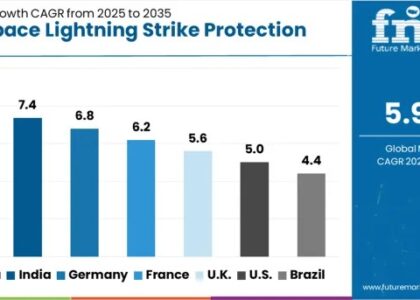The global sterile packaging market is set to witness remarkable growth, with a projected valuation of US$ 29.5 billion by 2033, expanding at a CAGR of 5.8% from 2023 to 2033, according to recent market analysis. In 2023, the market size is estimated to surpass US$ 16.8 billion, marking a significant milestone in the packaging industry.
Key Drivers Fueling Sterile Packaging Market Growth:
- Emphasis on Healthcare Safety and Infection Control: With increasing advancements in medical technology, the need for safe and contamination-free packaging solutions has become paramount. Sterile packaging plays a critical role in preserving the efficacy of life-saving drugs, medical devices, and equipment, thereby driving demand across healthcare sectors worldwide.
- Rapid Shift Toward Plastic-based Packaging: The packaging sector is witnessing a rapid shift toward plastic-based materials due to their convenience, flexibility, durability, and sustainability compared to traditional materials like glass. This shift is anticipated to further boost the demand for sterile packaging, particularly in the pharmaceutical and healthcare industries.
Request Our Sample Report: https://www.futuremarketinsights.com/reports/sample/rep-gb-14608
Factors Propelling Sterile Packaging Demand Globally:
- Adoption of Outsourcing Model: Leading packaging companies are adopting the outsourcing model to expand their market footprint and lower operational costs. Outsourcing sterile packaging production to local contract-based manufacturers enables companies to capitalize on resources in key regions like Asia Pacific, driving sustainable growth and enhancing market penetration.
- Rapid Shift Toward Plastic-based Packaging: Companies are increasingly opting for plastic-based sterile packaging due to its lower production costs, easy availability, and sustainability benefits over glass packaging. Plastic-based materials offer greater convenience and flexibility, aligning with evolving consumer preferences and industry trends.
Factors Limiting Sterile Packaging Sales through 2033:
- Growing Preference for Eco-Friendly Packaging: Consumer demand for eco-friendly and biodegradable packaging solutions poses a challenge to traditional sterile packaging materials. Stringent regulations on single-use plastics and packaging waste further contribute to market limitations.
- Shifts in Consumer Preferences: Increasing consumer preferences for fresh, locally sourced products and sustainable packaging options may hinder the growth of traditional sterile packaging solutions.
- Cost Considerations and Affordability Issues: Cost constraints and affordability issues associated with sterile packaging solutions may impede market demand, particularly in emerging economies.
- Technological Innovations: Technological advancements leading to improved shelf life of non-sterile packaged products may reduce the demand for sterile packaging solutions in certain market segments.
Purchase Now to Access Segment-specific Information and uncover Key Trends, Drivers, and Challenges: https://www.futuremarketinsights.com/checkout/14608
Industry Trends:
- Rising Demand for Biopharmaceuticals: The expanding biopharmaceutical industry, including the development and production of biologics, vaccines, and biosimilars, is driving the demand for advanced sterile packaging solutions to ensure the safety and efficacy of these sensitive products.
- Emphasis on Single-Use Packaging: The shift towards single-use packaging, especially in the pharmaceutical and biopharmaceutical sectors, is gaining momentum to reduce the risk of contamination and enhance overall product safety.
- Rapid Growth of E-Commerce in Healthcare: The rise of e-commerce in the healthcare sector is influencing sterile packaging trends, with a need for packaging solutions that ensure product safety during online transportation and storage.
- Increased Adoption of Flexible Packaging: Flexible sterile packaging formats, such as pouches and flexible blister packs, are gaining popularity due to their lightweight nature, cost-effectiveness, and adaptability to various product shapes and sizes.
- Increasing Healthcare Expenditure: The growing global healthcare expenditure is creating a significant demand for sterile packaging solutions, driven by the need to maintain product integrity and prevent contamination in medical devices and pharmaceuticals.
- Integration of Smart Packaging Technologies: The integration of smart packaging technologies, such as RFID tracking and sensor-based indicators for real-time monitoring of product conditions, is becoming more prevalent in sterile packaging to enhance supply chain visibility and product safety.
Competitive Landscape
Manufacturers of sterile packaging are implementing a number of measures to meet the rising demand for their goods and maintain their position as market leaders. They are improving their supply chains to suit the growing need for sterile packaging.
To efficiently deliver goods to customers, it entails optimizing production procedures, guaranteeing a stable supply of raw materials, and improving distribution networks. Manufacturers can fulfill deadlines and react quickly to client requests when their supply chains are optimized.
Leading producers of sterile packaging are expanding their product lines and looking into new market opportunities to serve a variety of sectors. To access untapped markets and niches, they are expanding into them. Diversification might create growth opportunities while reducing hazards brought on by reliance on specific sectors.
Request Report Methodology: https://www.futuremarketinsights.com/request-report-methodology/rep-gb-14608
Sterile Packaging Market by Category
By Product Type:
- Thermoform Trays
- Bottles/Containers
- Vials & ampoules
- Caps & Closures
- Pre-filled syringes
- Blister & clamshells
- IV Bags & pouches
- Wraps
- Others (Lids, etc.)
By Material Type:
- Plastic Sterile Packaging
- Glass Sterile Packaging
- Metal Sterile Packaging
- Paper & paperboard Sterile Packaging
By End Use:
- Pharmaceutical & Biological
- Surgical & Medical Instruments
- Food & Beverage
- Other End Use
By Region:
- North America
- Latin America
- Europe
- South Asia
- East Asia
- Oceania
- Middle East & Africa (MEA)
Author
Ismail Sutaria (Lead Consultant, Packaging and Materials) has over 8 years of experience in market research and consulting in the packaging & materials industry. Ismail’s strength lies in identifying key challenges faced by the client and offering logical and actionable insights to equip the clients with strategic decision-making power.
Ismail has been an instrumental part of several transformational consulting assignments. His key skills include competitive benchmarking, opportunity assessment, macroeconomic analysis, and business transformation advisory. Ismail is an MBA holder in Marketing and has a Bachelor’s Degree in Mathematics.
About Future Market Insights (FMI)
Future Market Insights, Inc. (ESOMAR certified, recipient of the Stevie Award, and a member of the Greater New York Chamber of Commerce) offers profound insights into the driving factors that are boosting demand in the market. FMI stands as the leading global provider of market intelligence, advisory services, consulting, and events for the Packaging, Food and Beverage, Consumer, Technology, Healthcare, Industrial, and Chemicals markets. With a vast team of over 400 analysts worldwide, FMI provides global, regional, and local expertise on diverse domains and industry trends across more than 110 countries.
Contact Us:
Future Market Insights Inc.
Christiana Corporate, 200 Continental Drive,
Suite 401, Newark, Delaware – 19713, USA
T: +1-845-579-5705
For Sales Enquiries: sales@futuremarketinsights.com
Website: https://www.futuremarketinsights.com
LinkedIn| Twitter| Blogs | YouTube


